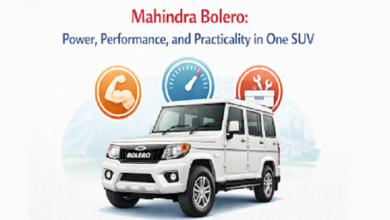5 Stretches to Try When You’re Stuck in a Long Meeting or Zoom Call

If you’ve ever felt stiff, restless, or achy halfway through a Zoom call or during a never-ending meeting, you’re not alone. Sitting for extended periods—especially in less-than-ideal postures—can take a serious toll on your neck, shoulders, back, and hips. While standing up and walking around isn’t always an option, subtle movement is. Incorporating stretches into your day is a simple way to support circulation and posture.
Whether you’re working from home or the office, physiotherapy in Edmonton offers solutions for easing that “sitting slump” without stepping away from the screen.
Why Stretching During Work Matters
Many of us spend 6 to 10 hours a day sitting. Over time, this can contribute to tight hips, rounded shoulders, neck strain, and lower back discomfort. Add poor screen setup or multitasking during a Zoom call, and your body ends up paying the price.
Workplace stretches help break up long periods of inactivity, restore movement, and signal your nervous system to relax. Even small changes in posture and breathing can help prevent the cumulative effects of sitting too long, which can include everything from stiffness to tension headaches. If you can’t step away, try these quick office stretches right at your desk (camera off is optional!).
5 Simple Stretches to Loosen Up During Long Zoom Calls
In Edmonton, physiotherapy offers stretches that improve posture, relieve tension, and support joint mobility—all without leaving your chair. These movements are designed to help you feel better and stay focused, even when your schedule is packed with back-to-back calls.
1. Seated Upper Back Opener
How to do it:
Sit tall, ensuring your feet are flat and your posture aligned on the ground. Interlace your fingers behind your head, maintaining your elbows wide. Inhale as you gently lift your chest toward the ceiling and press your head into your hands. Maintain the position for 10–15 seconds while breathing deeply.
Benefits:
This stretch helps reverse the hunched posture that develops from prolonged screen time. It encourages better chest expansion and spinal alignment, easing upper-back fatigue and supporting overall posture while seated.
2. Neck Side Stretch
How to do it:
Sit upright and let your right ear drop toward your right shoulder. Gently use your right hand to deepen the stretch without forcing it. Keep your left shoulder relaxed and away from your ear. Hold for 15–20 seconds, then switch sides.
Benefits:
This stretch reduces tightness in the neck and shoulder area—a common issue for anyone working at a desk or frequently looking down at a screen. It also helps prevent tension headaches caused by muscle strain.
3. Seated Spinal Twist
How to do it:
Sit sideways in a stable chair (no wheels). Place your hands on the backrest and gently twist your torso toward it, keeping your spine long and tall. Let your gaze follow the twist. Hold for 15 seconds, then repeat on the other side.
Benefits:
Twisting helps decompress the spine and improve rotational movement. It’s especially helpful for relieving lower back tension and promoting more fluid posture after hours of sitting still.
4. Ankle Pumps + Seated Leg Extension
How to do it:
Straighten one leg out in front of you. Flex and point your toes slowly about 10 times. Then, rotate your ankle in small circles for 10 seconds in each direction. Switch legs and repeat.
Benefits:
This movement promotes circulation in your lower legs, which can become sluggish when sitting for long periods. It also reduces swelling and stiffness, helping you feel more energized during and after long meetings.
5. Seated Side Body Stretch
How to do it:
Sit upright and reach your right arm overhead. Gently lean to the left without lifting your right hip. Keep your breathing steady and your left hand resting on your thigh or chair. Hold for 10–15 seconds and switch sides.
Benefits:
A great stretch for the ribs, mid-back, and waistline, this movement opens up tight side body muscles that often get compressed from poor posture. It encourages fuller breathing and helps reset your spine’s natural curve.
Why Office Workers Benefit from Physiotherapy Support
Even with regular stretching, some aches and pains need a bit more attention. If you’re dealing with chronic discomfort, physiotherapy for office workers can help address deeper issues like poor posture, tight hips, or upper back strain. Many physiotherapy clinics create personalized movement and mobility plans based on your workspace habits, job demands, and current symptoms.
Providers of physiotherapy in Edmonton often work with professionals just like you—those who spend long hours sitting and want to feel better throughout the workday. A few sessions of guided care can turn small daily habits into long-term relief.
Small Movements, Big Relief
Being glued to your chair during long Zoom calls or never-ending meetings doesn’t mean you have to feel sore or stiff by the end of the day. These easy workplace stretches are quick, quiet, and desk-friendly—and they can make a real difference in how you feel, move, and focus.
Whether you’re looking for a little relief from sitting too long or starting to notice recurring tension in your neck and back, stretching is one of the simplest ways to stay ahead of discomfort. If your body needs more than a quick reset, physiotherapy Edmonton can help guide your recovery and keep you moving well—on and off the clock.
If you’re searching for a physiotherapist near me who fits into your day, Next Step Physiotherapy offers tailored solutions for working professionals, with treatments designed around posture, mobility, and comfort at your desk.




